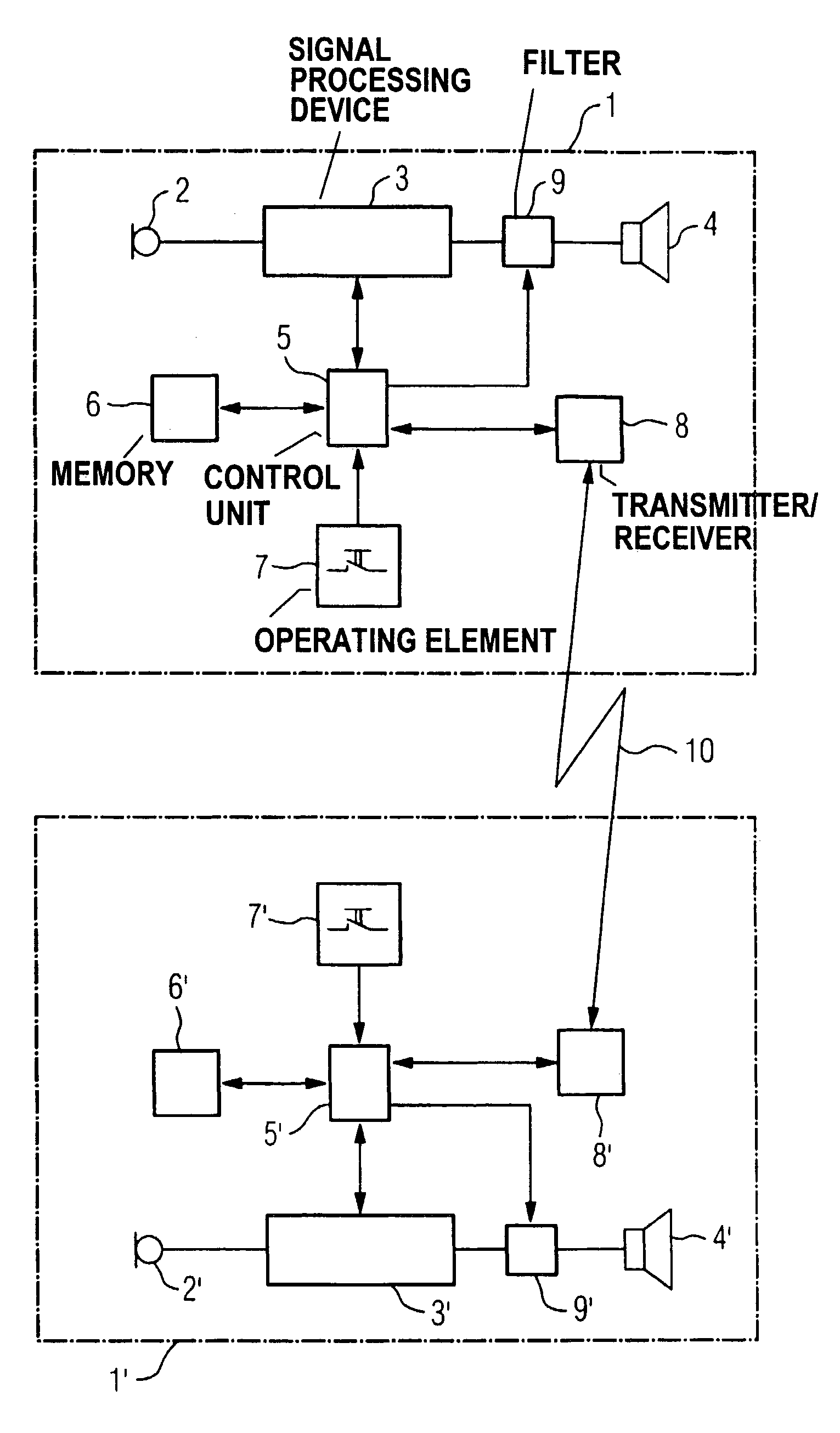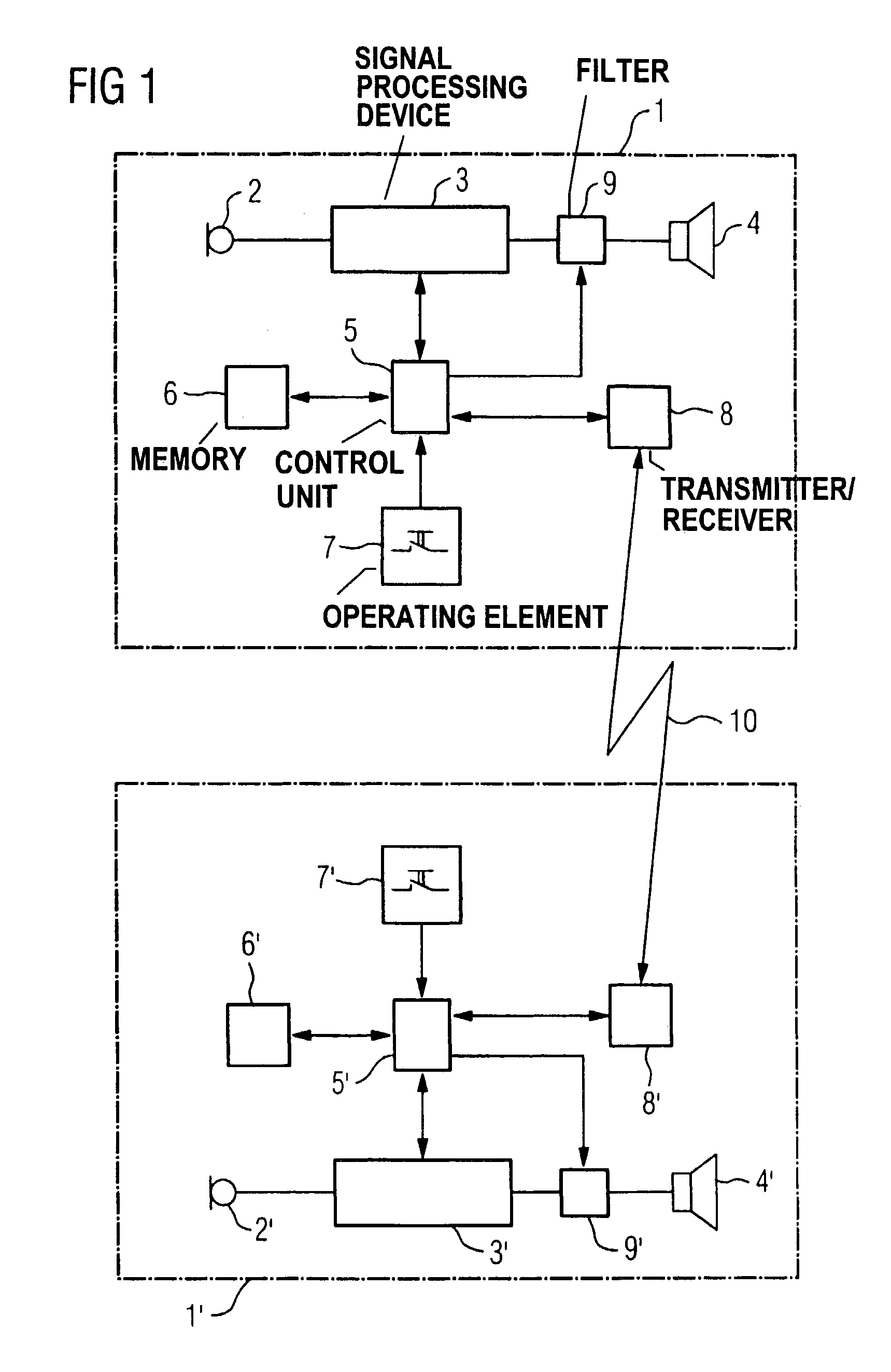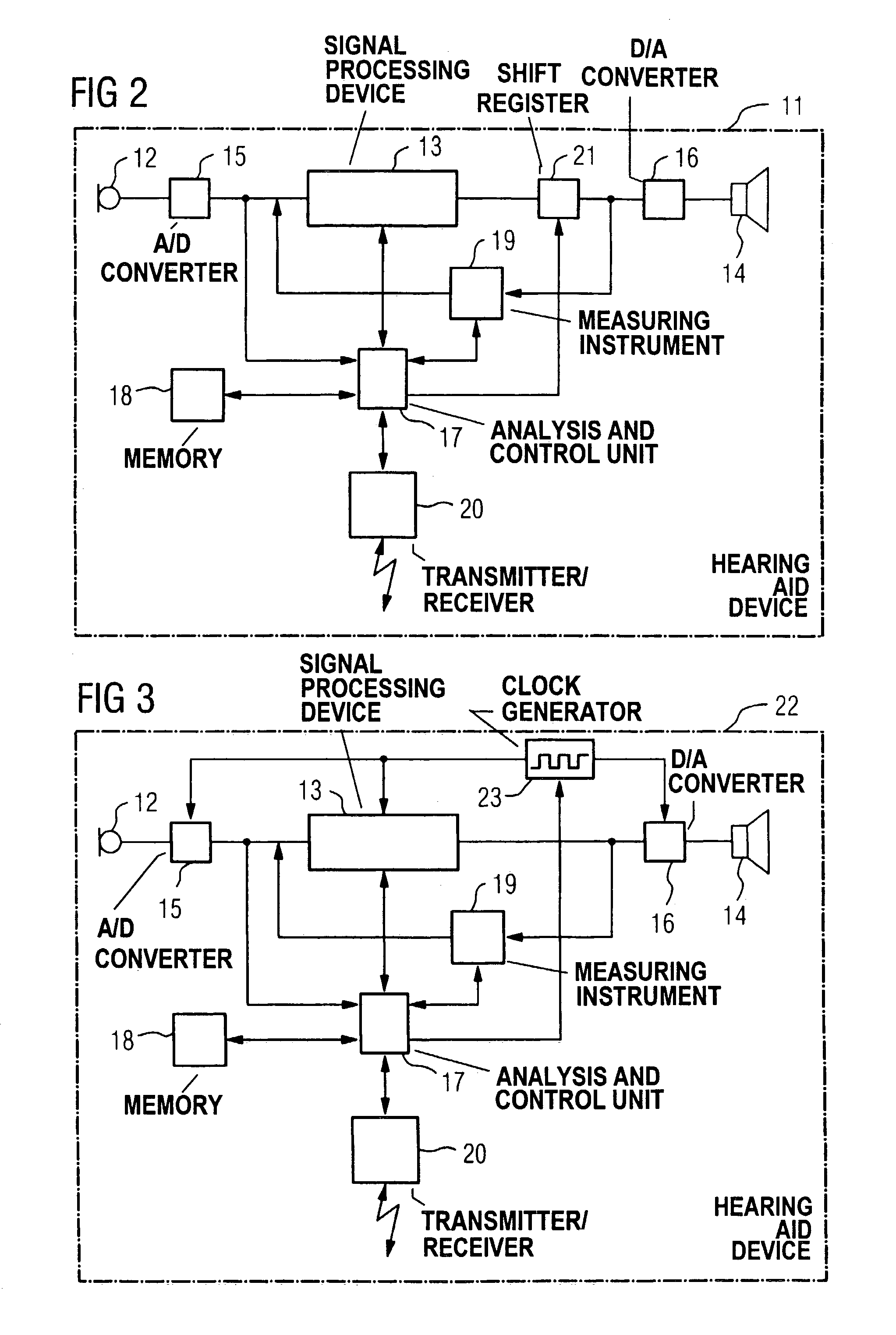Directional hearing given binaural hearing aid coverage
a binaural hearing aid and directional hearing technology, applied in the field of hearing aid systems, can solve the problems of different signal transit times within the hearing aid devices, loss of directional hearing, and different degree of hearing loss for hearing aid users, and achieve the effect of minimizing the additional computing expenditur
- Summary
- Abstract
- Description
- Claims
- Application Information
AI Technical Summary
Benefits of technology
Problems solved by technology
Method used
Image
Examples
Embodiment Construction
[0027]Given a hearing aid system with two hearing aids as known from the initially cited Prior Art, an identical signal transit time in the signal paths of the two hearing aid devices between the microphone and the earphone is respectively generated without explicitly knowing this signal transit time. The high computing outlay and the high data transmission rate that is required as disadvantageous.
[0028]In contrast, an embodiment of the invention provides that the signal transit time of the electrical signal in the signal path between the input transducer and the output transducer of the first hearing aid device be determined at least in a relevant sub-region wherein transit time differences may be fundamentally expected, and that the signal transit time of the electrical signal between the input transducer and the output transducer of the second hearing aid device be adapted to the identified signal transit time of the first hearing aid device.
[0029]Transit time differences between...
PUM
 Login to View More
Login to View More Abstract
Description
Claims
Application Information
 Login to View More
Login to View More - R&D
- Intellectual Property
- Life Sciences
- Materials
- Tech Scout
- Unparalleled Data Quality
- Higher Quality Content
- 60% Fewer Hallucinations
Browse by: Latest US Patents, China's latest patents, Technical Efficacy Thesaurus, Application Domain, Technology Topic, Popular Technical Reports.
© 2025 PatSnap. All rights reserved.Legal|Privacy policy|Modern Slavery Act Transparency Statement|Sitemap|About US| Contact US: help@patsnap.com



